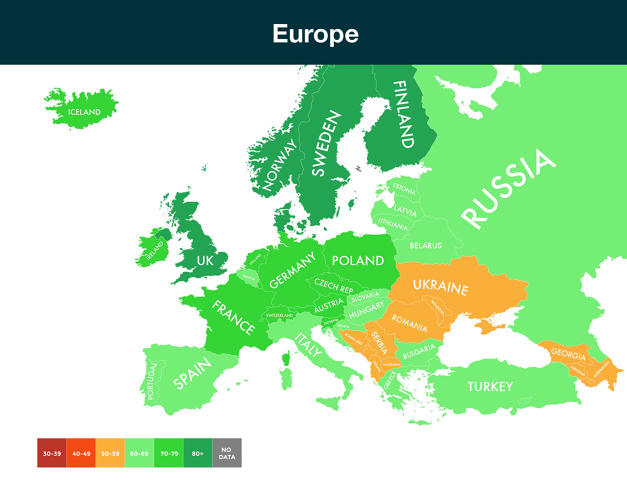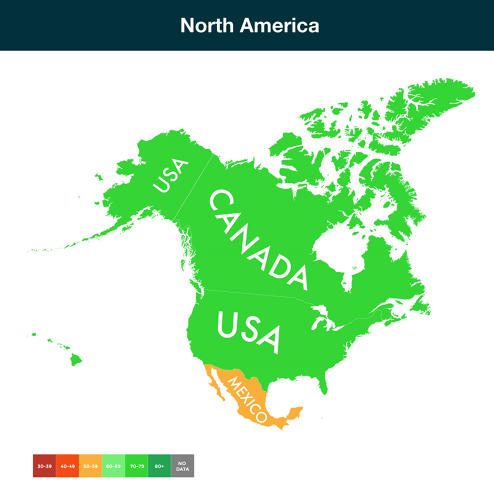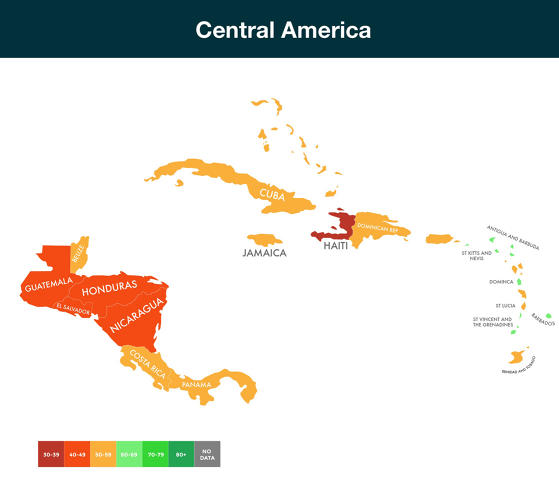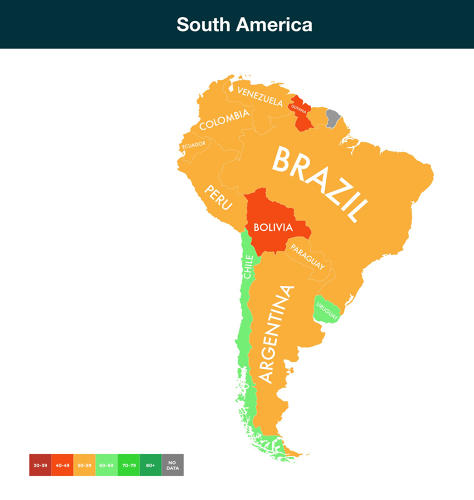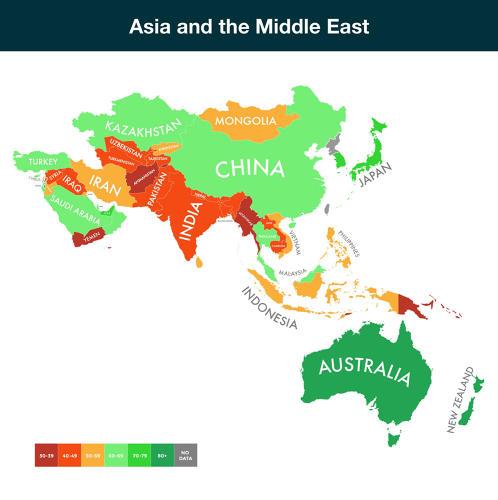Whether you live in San Francisco or Mongolia, climate change is going to impact your life. But even though it isn’t possible for any location to completely avoid effects like drought, floods, heat waves, and other extreme weather, some places are much more prepared than others.
A series of maps from Eco Experts shows how different countries compare. Places like Norway, which is ranked least vulnerable in the world, are shaded in green. The least-prepared, most vulnerable countries are shown in red.
The maps were based on research from the most recent Notre Dame Global Adaptation Index, which looks at everything from a country’s infrastructure to factors like social stability. The higher the rating on the index, the more likely a country will be able to quickly bounce back from the kinds of natural disasters that climate change is making more common.
From our partners:
That doesn’t mean that green-colored countries are fully prepared for climate change, just that they’re farther along than those in yellow and red. No one has a perfect score of 100—Norway, the leader, has a score of only 82.6.
“No one is at the point where they are actually very ready,” says Joyce Coffee, managing director of the Notre Dame Global Adaptation Index. “But what our data actually show is that it would take more than 100 years for lower income countries to reach the level of resiliency that OECD countries or the U.S. have right now. That’s an incredibly long time to wait.”
Hurricane Sandy, she says, is one example of how a better-prepared country can recover from a disaster. “People say Sandy was so tough, and my answer is, you bet it was,” she says. “But compare that to Tacloban in the Philippines. You can see that our rebound from these shocks is faster…That’s what the index says: That the country has the wherewithal to pick itself up.”
The index was created to show where climate adaptation is needed most. “We need to highlight where that suffering is greatest, but also where the opportunity to act is greatest,” Coffee says. “It’s not just like ‘Oh, god, the world is ending,’ but ‘Let’s do something about this.'”
The organization hopes that global companies will use the index to better understand how climate change will impact their supply chain—and how they can help invest to help make certain locations more resilient. Governments and development organisations can also use the data to plan investments.
The good news: Some countries are moving very quickly to become better prepared, like Rwanda, which has improved more than anywhere else in the world in the last five years. And some of the work that’s needed to adapt to climate change—like strengthening health care systems—is already happening.
“A lot of what the world has done around trying to decrease poverty, for instance, could be considered adaptation or increasing resilience,” Coffee says. “So it’s not that we have to learn a brand new script. It’s simply that we have to look at our future in a way that’s different from our past, and we need to be much more assertive and aggressive about addressing the new paradigm that is a climate-changed world.”
This article originally appeared in Fast Company.
–>









